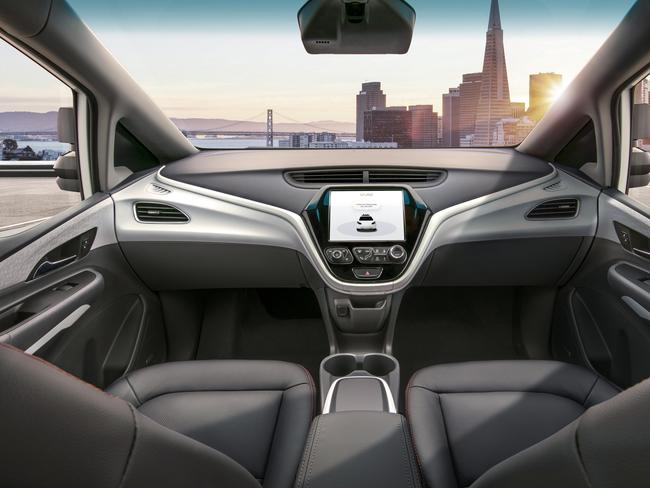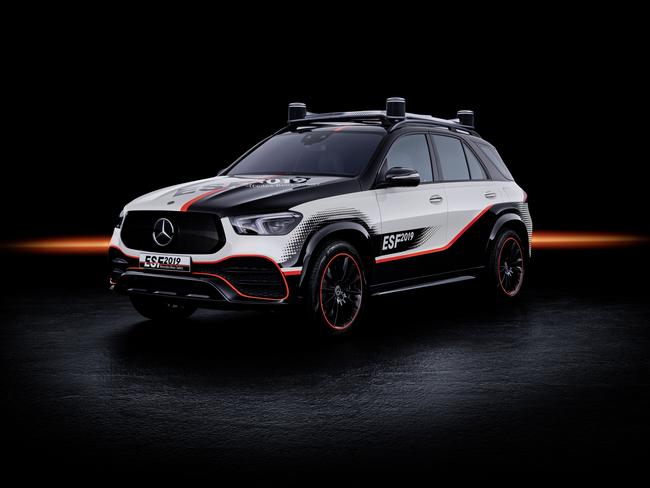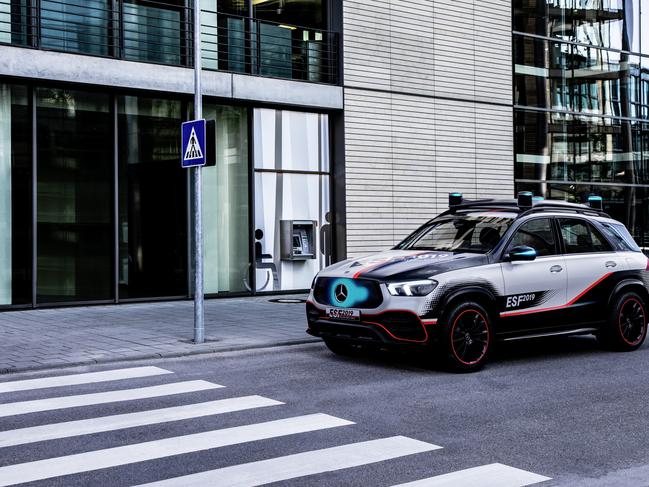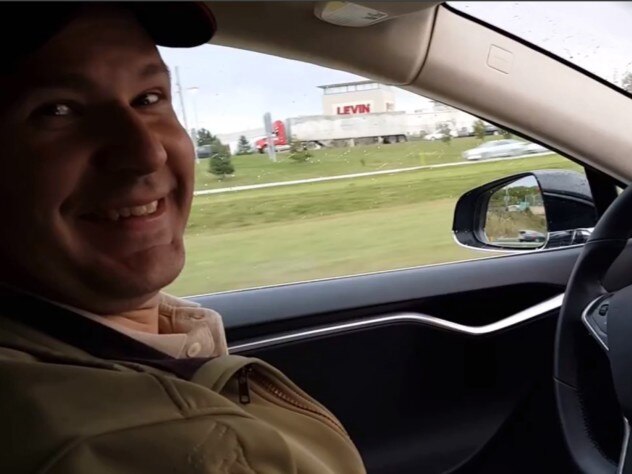Mercedes-Benz, GM to benefit from Australian self-driving car breakthrough
Physicists using sophisticated lasers to measure gravitational waves say technical discoveries made trying to understand space could put autonomous vehicles in the fast lane.
Exclusive: Australian stargazers could bring self-driving cars closer to reality.
Physicists using sophisticated lasers to measure gravitational waves say technical discoveries made trying to understand space could put autonomous vehicles in the fast lane.
Their work will make lidar (laser detection and ranging) sensors much smaller and cheaper than large and prohibitively expensive units currently used for prototype self-driving vehicles.
It also has the potential to be safer than camera-based self-driving technology linked to the deaths of some Tesla customers.

Australian National University researchers Dr Lyle Roberts and James Spollard working for the ARC Centre of Excellence in Gravitational Wave Discovery say techniques used to detect tiny disturbances in space could help future vehicles stay safe on the road.
Dr Roberts said experience gained developing breakthrough technology used to detect minuscule signals from space will help the “OzGrav” team develop solid-state credit card-sized sensors far smaller and less complex than large and complex units filled with fragile equipment.

He said the technology is based on photonic integrated circuits being developed in collaboration with the ARC Centre of Excellence for Engineered Quantum Systems which could be sold for less than $100 per unit, far less than current tech which can cost as much as $80,000.
This would make lidar commercially viable.
“It might improve the safety of self-driving cars,” Dr Roberts said.
“It allows the car to make better judgments about how to perform.”
The team has been working with companies such as General Motors’ Cruise and Google’s Waymo to understand shortcomings of current technology.

“Australia is actually a player in these big endeavours making self-driving cars a reality,” Dr Roberts said.
“If it wasn’t for these opportunities I would probably have moved to Silicon Valley.”
MORE NEWS:
Corruption, scandals delay Cocaine Cassie’s parole bid
Liberal Minister ‘totally’ accepts climate change is man-made
Miley cuddles up to new Aussie boyfriend
Aussie bloggers freed in apparent prisoner swap
Key problems for manufacturers include interference from other light sources and the ability to see long distances, when very little light is reflected back to vehicle sensors.
The latter is a specialty for a research group accustomed to taking readings from space.

Dr Roberts said the team’s research allows their sensor to measure an object’s distance and velocity, enabling computers interpreting sensor data to prioritise objects based on movement.
Mr Spollard, a PhD student in physics, said “in order for self-driving cars to be safer than human drivers, they require better-than-human perception”.
“Autonomous vehicles are about 99 per cent of the way there, but it’s that last 1 per cent that really matters.”
Dr Roberts is convinced the precise measurement of distance and speed offered by lidar will be vital to the future of driverless vehicles.

“I wouldn’t get into a self-driving car unless it was absolutely guaranteed to be safer than a human driver,” he said.
“Autonomous cars will not be enabled without some form of lidar.”
Most of the world’s top self-driving car programs, including Mercedes-Benz and Waymo, say autonomous vehicles need lidar to be safe.
Tesla is the outlier, relying on stereo cameras in the belief that if humans can rely on eyesight then cars should follow the same path.
But Tesla’s camera-based “autopilot” system is not foolproof.
American Tesla customer Joshua Brown died when his Model S slammed into the side of a truck in 2016.

According to the manufacturer, “neither autopilot nor the driver noticed the white side of the tractor trailer against a brightly lit sky”.
Tesla’s famously outspoken founder, Elon Musk, made headlines in April by telling investors lidar is “friggin’ stupid, it’s expensive and unnecessary”, and that Tesla would stick with cameras.
Dr Roberts said there is a reason carmakers are “investing heavily” in lidar, as “cameras are easily fooled.”

Speaking with News Corp Australia at the 2019 Frankfurt Motor Show, Mercedes-Benz research and development chief Markus Schäfer said a lack of practical and affordable lidar slowed the introduction of autonomous vehicles.
“The lidar is key,” Mr Schäfer said.
“Right now there are some limitations in how far you can see with your sensor equipment.
“That’s why the autonomous [technology] is moving a bit slower than originally anticipated.”
Originally published as Mercedes-Benz, GM to benefit from Australian self-driving car breakthrough
